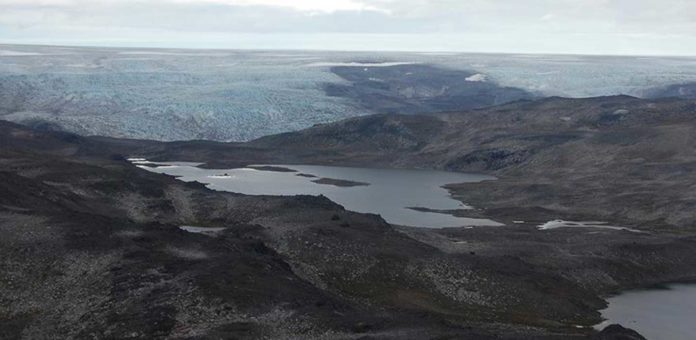During the earth formation, some catastrophic impacts took place that would have generated enough energy to melt our planet’s interior. Be that as it may, we don’t think a lot about this distant and fiery period of Earth’s history because the tectonic process has reused practically all rocks older than 4 billion years.
The differentiation of Earth ~4.5 billion years (Ga) ago is believed to have culminated in magma ocean crystallization, crystal-liquid separation, and the formation of mineralogically distinct mantle reservoirs. However, the magma ocean model remains challenging to validate because of the scarcity of geochemical tracers of lower mantle mineralogy.
Now, scientists have found the chemical remnants of the magma ocean in 3.6-billion-year-old rocks from southwestern Greenland. This is rare evidence preserved in the chemistry of ancient rocks from Greenland – which tells of a time when Earth was almost entirely molten.
The discoveries uphold the extended held hypothesis that Earth was once a rule liquid and give a window into when the planet began to solidify and build up the chemistry that presently administers its inner construction. The research proposes that different shakes on Earth’s surface may likewise protect proof of ancient magma oceans.
Lead author Dr. Helen Williams from Cambridge’s Department of Earth Sciences said, “There are few opportunities to get geological constraints on the events in the first billion years of Earth’s history. Astonishingly, we can even hold these rocks in our hands – let alone get so much detail about the early history of our planet.”
For the study, scientists performed forensic chemical analysis together with thermodynamic modeling on samples. They wanted to find the prehistoric origins of the Greenland rocks and how they got to the surface.
At first instance, the rocks that makeup Greenland’s Isua supracrustal belt appear like any modern basalt you’d find on the seafloor. Be that as it may, this outcrop, which was first portrayed during the 1960s, is the oldest exposure of rocks on Earth. It is known to contain the most punctual proof of microbial life and plate tectonics.
The study shows that the Isua rocks also preserve rare evidence, which even predates plate tectonics – the residues of some of the crystals left behind as that magma ocean cooled.
Dr. Hanika Rizo, from Carleton University, said, “It was a combination of some new chemical analyses we did and the previously published data that flagged to us that the Isua rocks might contain traces of ancient material. The hafnium and neodymium isotopes were tantalizing because those isotope systems are very hard to modify – so we had to look at their chemistry in more detail.”
Iron isotopic systematics- performed on rock samples- also confirmed that the Isua rocks were derived from parts of the Earth’s interior formed as a consequence of magma ocean crystallization. Most of this ancient rock has been mixed up by convection in the mantle. Still, scientists think that some isolated zones deep at the mantle-core boundary – ancient crystal graveyards – may have remained undisturbed for billions of years.
Williams said, “Most of this primeval rock has been mixed up by convection in the mantle, but scientists think that some isolated zones deep at the mantle-core boundary – ancient crystal graveyards – may have remained undisturbed for billions of years.”
“It’s the relics of these crystal graveyards that Williams and her colleagues observed in the Isua rock chemistry. Those samples with the iron fingerprint also have a tungsten anomaly – a signature of Earth’s formation – which makes us think that their origin can be traced back to these primeval crystals.”
How these signals from the deep mantle find their way up to the surface?
Their isotopic makeup shows they were not just funneled up from melting at the core-mantle boundary. Their journey was more circuitous, involving several crystallization stages and remelting – a kind of distillation process. The mix of ancient crystals and magma would have first migrated to the upper mantle, where it was churned up to create a ‘marble cake’ of rocks from different depths. Later melting of that hybrid of rocks is what produced the magma which fed this part of Greenland.
Dr. Oliver Shorttle, who is jointly based at Cambridge’s Department of Earth Sciences and Institute of Astronomy, said, “The team’s findings suggest that modern hotspot volcanoes, which are thought to have formed relatively recently, may be influenced by ancient processes. The geochemical signals we report in the Greenland rocks bear similarities to rocks erupted from hotspot volcanoes like Hawaii – something we are interested in is whether they might also be tapping into the depths and accessing regions of the interior, usually beyond our reach.”
Co-author Dr. Simon Matthews from the University of Iceland said, “We’ve been able to unpick what one part of our planet’s interior was doing billions of years ago but to fill in the picture further, we must keep searching for more chemical clues in ancient rocks.”
Williams said, “The evidence is often altered by the course of time. But the fact we found what we did suggests that the chemistry of other ancient rocks may yield further insights into the Earth’s formation and evolution – and that’s immensely exciting.”
Journal Reference:
- Helen M. Williams et al. ‘Iron isotopes trace primordial magma ocean cumulates melting in Earth’s upper mantle.’ Science Advances (2021). DOI: 10.1126/sciadv.abc7394
